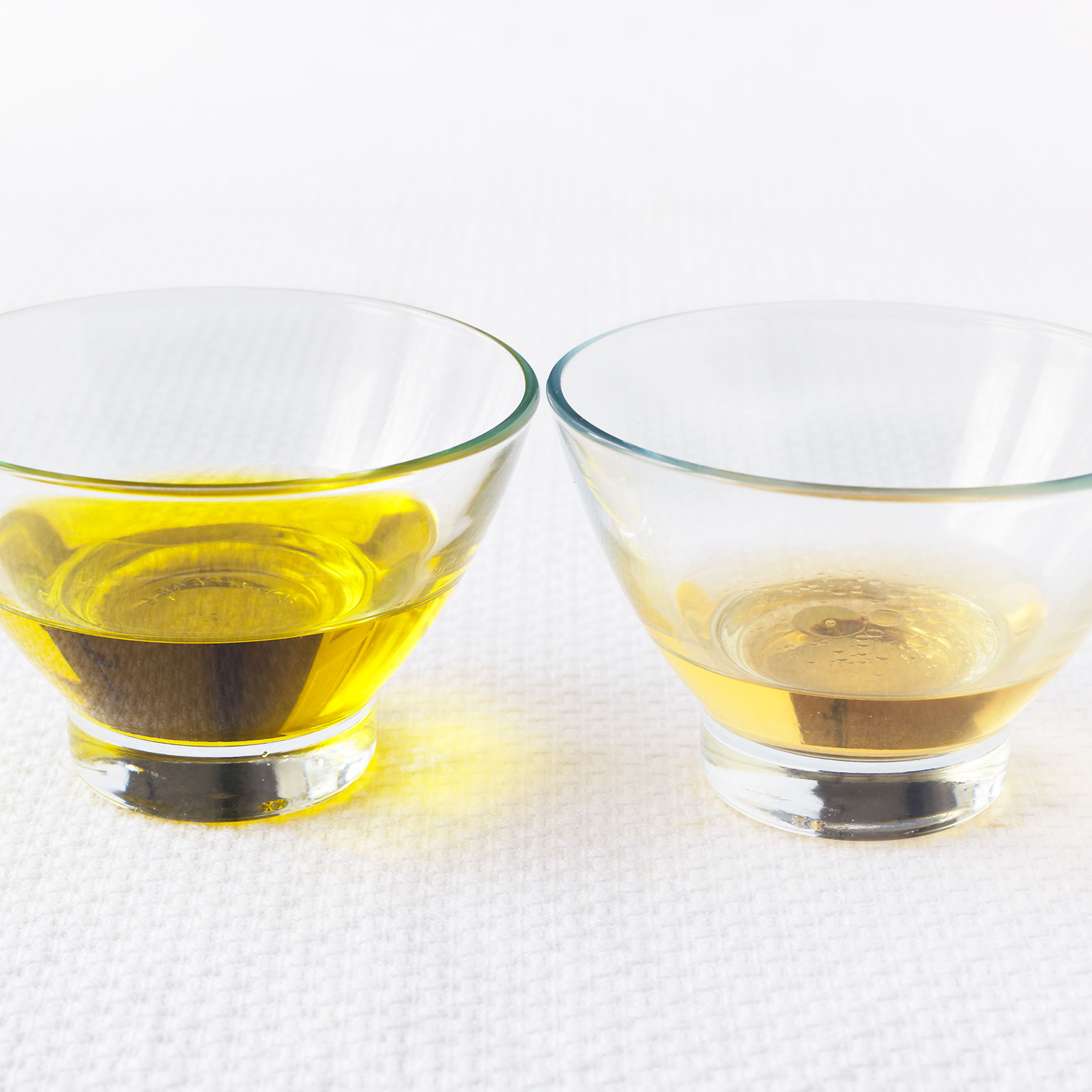Dressing basics
Vinaigrette dressings are very easy to make, and add a welcome tartness to any salad. Why not try one of the many vinaigrettes found throughout this eBook following the steps below – or even invent your own?
Building a dressing
Standard vinaigrette dressings tend to follow a simple ratio of components: 3 parts oil (or oil-based ingredient) to 1 part acid (such as vinegar or citrus juice). In addition, seasonings and flavourings can be added; usually about 1⁄2 part of each will provide a balanced taste. Provided you keep to these ratios and choose suitable ingredients, you can whip up your own unique vinaigrette inventions by following these next steps.
Basic vinaigrette
1 Measure out your ingredients: no matter the quantity, you generally need 3 parts oil to 1 part acid.
2 Combine the oil and acid, together with any other flavouring ingredients you wish to use.
3 Whisk thoroughly to emulsify (combine) the ingredients. Add any flavourings or seasonings you wish to use and whisk again.
Dressing components
Be inspired by some of the vinaigrette ingredients suggested below, and build your own ideal vinaigrette dressing for your favourite salad.
Add 3 parts of any of the following:
- olive oil
- extra virgin olive oil
- sunflower oil
- hazelnut oil
- groundnut oil
- mayonnaise
- Greek-style yogurt
- soured cream
Add 1 part of any of the following:
- white wine vinegar
- red wine vinegar
- rice wine vinegar
- balsamic vinegar
- apple cider vinegar
- fruit vinegar
- lemon juice
- lime juice
Add 1⁄2 part of any of the following:
- mustard
- honey
- soy sauce
- sweet chilli sauce
- sesame oil
- miso paste
- pesto
- citrus zest, grated
- garlic, crushed
- berries, crushed
- olives, diced
- fresh chillies, diced
- onions, diced
- anchovies, chopped
- Parmesan cheese, grated
- blue cheese, crumbled
Add to taste:
- salt and pepper
- sugar
- chilli flakes
- herbs (fresh or dried)
- dried spices
- curry powder
Dressing tips
Sesame oil has a rich, nutty taste that works better as a flavouring than as a base. Try pairing it with sunflower or groundnut oil.
Avoid malt vinegar, which is too overpowering for most dressings.
Some of the salads in this eBook do not feature a specific dressing recipe. Instead, the components are often tossed in a simple oil–acid mixture of extra virgin olive oil and lemon juice. Omit these ingredients if you want to add your own dressing to the salad instead.
Storing dressings
If not being used immediately, dressings should be covered and stored in the fridge. They can be kept for up to 3 days.
Remember to remove the dressing from the fridge at least 1 hour before using, to bring it back to room temperature.
Vinaigrette dressings often split during storage, with the oil rising to the surface. This is natural – simply whisk the mixture again to re-emulsify the vinaigrette, then pour over the salad as usual. You can also store vinaigrette in any jar with a vinegar-proof lid. Simply shake the jar to re-emulsify the contents before serving.







